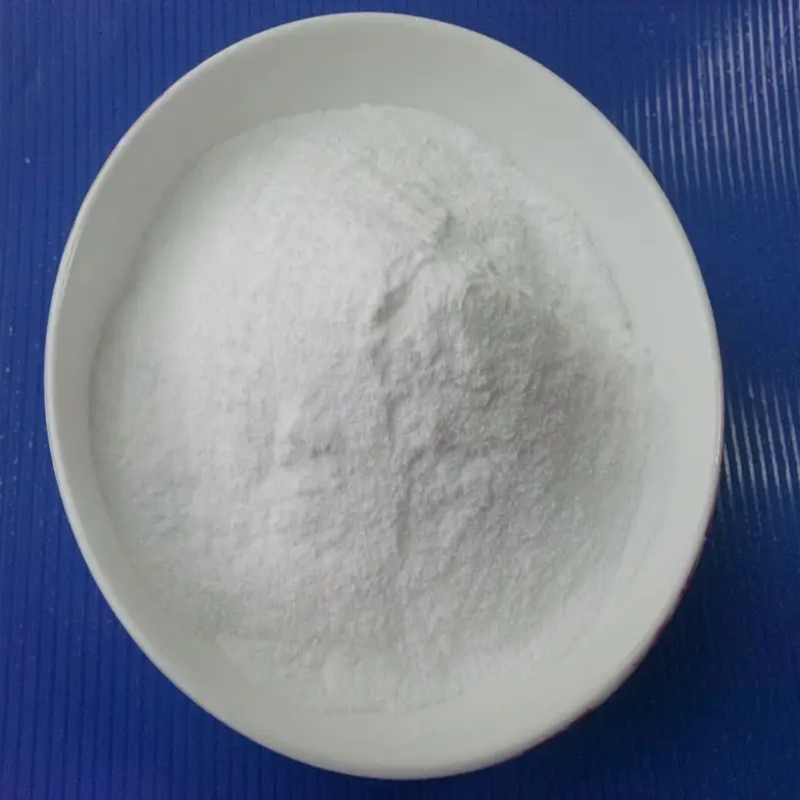-
Categories
-
Pharmaceutical Intermediates
-
Active Pharmaceutical Ingredients
-
Food Additives
- Industrial Coatings
- Agrochemicals
- Dyes and Pigments
- Surfactant
- Flavors and Fragrances
- Chemical Reagents
- Catalyst and Auxiliary
- Natural Products
- Inorganic Chemistry
-
Organic Chemistry
-
Biochemical Engineering
- Analytical Chemistry
- Cosmetic Ingredient
-
Pharmaceutical Intermediates
Promotion
ECHEMI Mall
Wholesale
Weekly Price
Exhibition
News
-
Trade Service
Acute brain injury activates the immune system, rapidly mobilizes peripheral immune cells and chemotaxis to the brain, and participates in neuroinflammation and secondary brain injury.
Immune cells are derived from the bone marrow hematopoietic system.
As the body's primary hematopoietic organ and immune organ, how does the bone marrow hematopoietic system react after brain damage causes a large consumption of peripheral immune cells? What are the effects on disease progression? Is immune intervention targeting the bone marrow hematopoietic system feasible? On April 14, 2021, Professor Liu Qiang's team from the Department of Neurology, Tianjin Medical University General Hospital published a study titled "Brain injury instructs bone marrow cellular lineage to reduce neuroinflammation" in Science Translational Medicine.
Expert profile Professor Liu Qiang, doctoral supervisor.
Undergraduate studies in Nanjing Medical University have successively obtained bachelor and master degrees in clinical medicine.
In 2011, he obtained a doctorate degree in neurology from the Barrow Institute of Neurology in the United States, and then engaged in postdoctoral research in immunology at the Barrow Institute of Neurology, and was promoted to assistant professor of neurology in 2017.
After returning to China in 2018, he went to the Department of Neurology of Tianjin Medical University General Hospital to engage in clinical and scientific research.
He served as a professor, director of the Aging and Neurodegenerative Diseases Research Office of Tianjin Institute of Neurology, and a member of the Cerebrovascular Disease Group of the Neurology Branch of the Chinese Medical Association.
The main research directions are brain aging, cerebrovascular disease and neuroimmune disease.
In the past five years, the corresponding author has published 23 SCI articles in journals such as Nature Neuroscience, Immunity, Science Translational Medicine, and Journal of Experimental Medicine.
.
The study analyzed bone marrow cells obtained by decompressive craniectomy in patients with cerebral hemorrhage.
The research team found that cerebral hemorrhage rapidly activates bone marrow hematopoietic stem cells (HSCs).
Combining technologies such as micro-PET imaging, gene coding, and lineage tracing, the team further discovered that the body is innervated by nerves after cerebral hemorrhage, causing the bone marrow to produce monocytes with immune regulation functions in a short time.
Through Nanostring screening and immunoblotting technology, the team also discovered a molecular switch that mediates the production of monocytes from hematopoietic cells in the bone marrow.
As a self-protective mechanism after intracerebral hemorrhage, these newborn monocytes can migrate to the brain lesions and inhibit neuroinflammation and cerebral edema around the hematoma.
In addition, the use of FDA-approved selective β3 adrenergic receptor agonists can promote the bone marrow to produce more monocytes with immunomodulatory functions, thereby reducing neuroinflammation and improving the prognosis of cerebral hemorrhage (Figure 1).
The study clarified the changes in remote tissues and cell components after brain injury, revealing that in the long evolutionary process, the bone marrow hematopoietic system can sense signals from the damaged brain, generate regulatory immune cells, and go to the brain for rescue.
Neurologists may be able to reduce brain damage by amplifying this self-protection mechanism.
Figure 1 Cerebral hemorrhage activates the bone marrow hematopoietic system through innervation.
After cerebral hemorrhage, the body is innervated by the sympathetic nervous system (SNS) to release norepinephrine (NE), thereby activating the bone marrow hematopoietic system.
Hematopoietic stem cells (HSCs) and downstream myeloid precursor cells proliferate rapidly to generate regulatory monocytes.
These newborn monocytes can then migrate to the damaged area of the brain.
By targeting sympathetic innervation immune intervention, it can promote the bone marrow to produce more regulatory monocytes after cerebral hemorrhage, thereby reducing neuroinflammation and cerebral edema after cerebral hemorrhage.
Stroke has occupies the first place in the mortality rate of Chinese residents, and it is also the disease with the highest disability rate of a single disease, causing a great social burden.
More than 1.
9 million people die of stroke each year in our country.
Among them, hemorrhagic stroke has a very high mortality and disability rate.
There is still a lack of limited treatments, and the prognosis is usually poor.
This work revealed that acute brain injury represented by intracerebral hemorrhage can activate the bone marrow hematopoietic system through neural pathways, and the effect of new monocytes on the prognosis of neuroinflammation and brain injury after the activation of the bone marrow hematopoietic system (Figure 2).
This clarifies the internal connection between the bone marrow, a hematopoietic organ, and the nervous system, provides new ideas for clarifying the interaction between the nervous system and the immune system, and provides a new target for improving the prognosis of acute brain injury.
Figure 2 The bone marrow hematopoietic system produces regulatory monocytes after acute brain injury.
Acute brain injury activates the bone marrow hematopoietic system through innervation, and rapidly expands hematopoietic stem cells and downstream myeloid precursor cells (the purple and white cells shown in the circle in the figure).
As a result, monocytes with immunomodulatory effects are generated in a short period of time.
These newly-born regulatory monocytes can home to brain injury lesions and reduce neuroinflammation (photo courtesy of the author).
Full text link: Shi SX, Shi KB, Liu Q.
Brain injury instructs bone marrow cellular lineage that suppresses neuroinflammation.
Sci Transl Med.
2021;13:eabc7029.
DOI:10.
1126/scitranslmed.
abc7029.
Immune cells are derived from the bone marrow hematopoietic system.
As the body's primary hematopoietic organ and immune organ, how does the bone marrow hematopoietic system react after brain damage causes a large consumption of peripheral immune cells? What are the effects on disease progression? Is immune intervention targeting the bone marrow hematopoietic system feasible? On April 14, 2021, Professor Liu Qiang's team from the Department of Neurology, Tianjin Medical University General Hospital published a study titled "Brain injury instructs bone marrow cellular lineage to reduce neuroinflammation" in Science Translational Medicine.
Expert profile Professor Liu Qiang, doctoral supervisor.
Undergraduate studies in Nanjing Medical University have successively obtained bachelor and master degrees in clinical medicine.
In 2011, he obtained a doctorate degree in neurology from the Barrow Institute of Neurology in the United States, and then engaged in postdoctoral research in immunology at the Barrow Institute of Neurology, and was promoted to assistant professor of neurology in 2017.
After returning to China in 2018, he went to the Department of Neurology of Tianjin Medical University General Hospital to engage in clinical and scientific research.
He served as a professor, director of the Aging and Neurodegenerative Diseases Research Office of Tianjin Institute of Neurology, and a member of the Cerebrovascular Disease Group of the Neurology Branch of the Chinese Medical Association.
The main research directions are brain aging, cerebrovascular disease and neuroimmune disease.
In the past five years, the corresponding author has published 23 SCI articles in journals such as Nature Neuroscience, Immunity, Science Translational Medicine, and Journal of Experimental Medicine.
.
The study analyzed bone marrow cells obtained by decompressive craniectomy in patients with cerebral hemorrhage.
The research team found that cerebral hemorrhage rapidly activates bone marrow hematopoietic stem cells (HSCs).
Combining technologies such as micro-PET imaging, gene coding, and lineage tracing, the team further discovered that the body is innervated by nerves after cerebral hemorrhage, causing the bone marrow to produce monocytes with immune regulation functions in a short time.
Through Nanostring screening and immunoblotting technology, the team also discovered a molecular switch that mediates the production of monocytes from hematopoietic cells in the bone marrow.
As a self-protective mechanism after intracerebral hemorrhage, these newborn monocytes can migrate to the brain lesions and inhibit neuroinflammation and cerebral edema around the hematoma.
In addition, the use of FDA-approved selective β3 adrenergic receptor agonists can promote the bone marrow to produce more monocytes with immunomodulatory functions, thereby reducing neuroinflammation and improving the prognosis of cerebral hemorrhage (Figure 1).
The study clarified the changes in remote tissues and cell components after brain injury, revealing that in the long evolutionary process, the bone marrow hematopoietic system can sense signals from the damaged brain, generate regulatory immune cells, and go to the brain for rescue.
Neurologists may be able to reduce brain damage by amplifying this self-protection mechanism.
Figure 1 Cerebral hemorrhage activates the bone marrow hematopoietic system through innervation.
After cerebral hemorrhage, the body is innervated by the sympathetic nervous system (SNS) to release norepinephrine (NE), thereby activating the bone marrow hematopoietic system.
Hematopoietic stem cells (HSCs) and downstream myeloid precursor cells proliferate rapidly to generate regulatory monocytes.
These newborn monocytes can then migrate to the damaged area of the brain.
By targeting sympathetic innervation immune intervention, it can promote the bone marrow to produce more regulatory monocytes after cerebral hemorrhage, thereby reducing neuroinflammation and cerebral edema after cerebral hemorrhage.
Stroke has occupies the first place in the mortality rate of Chinese residents, and it is also the disease with the highest disability rate of a single disease, causing a great social burden.
More than 1.
9 million people die of stroke each year in our country.
Among them, hemorrhagic stroke has a very high mortality and disability rate.
There is still a lack of limited treatments, and the prognosis is usually poor.
This work revealed that acute brain injury represented by intracerebral hemorrhage can activate the bone marrow hematopoietic system through neural pathways, and the effect of new monocytes on the prognosis of neuroinflammation and brain injury after the activation of the bone marrow hematopoietic system (Figure 2).
This clarifies the internal connection between the bone marrow, a hematopoietic organ, and the nervous system, provides new ideas for clarifying the interaction between the nervous system and the immune system, and provides a new target for improving the prognosis of acute brain injury.
Figure 2 The bone marrow hematopoietic system produces regulatory monocytes after acute brain injury.
Acute brain injury activates the bone marrow hematopoietic system through innervation, and rapidly expands hematopoietic stem cells and downstream myeloid precursor cells (the purple and white cells shown in the circle in the figure).
As a result, monocytes with immunomodulatory effects are generated in a short period of time.
These newly-born regulatory monocytes can home to brain injury lesions and reduce neuroinflammation (photo courtesy of the author).
Full text link: Shi SX, Shi KB, Liu Q.
Brain injury instructs bone marrow cellular lineage that suppresses neuroinflammation.
Sci Transl Med.
2021;13:eabc7029.
DOI:10.
1126/scitranslmed.
abc7029.







